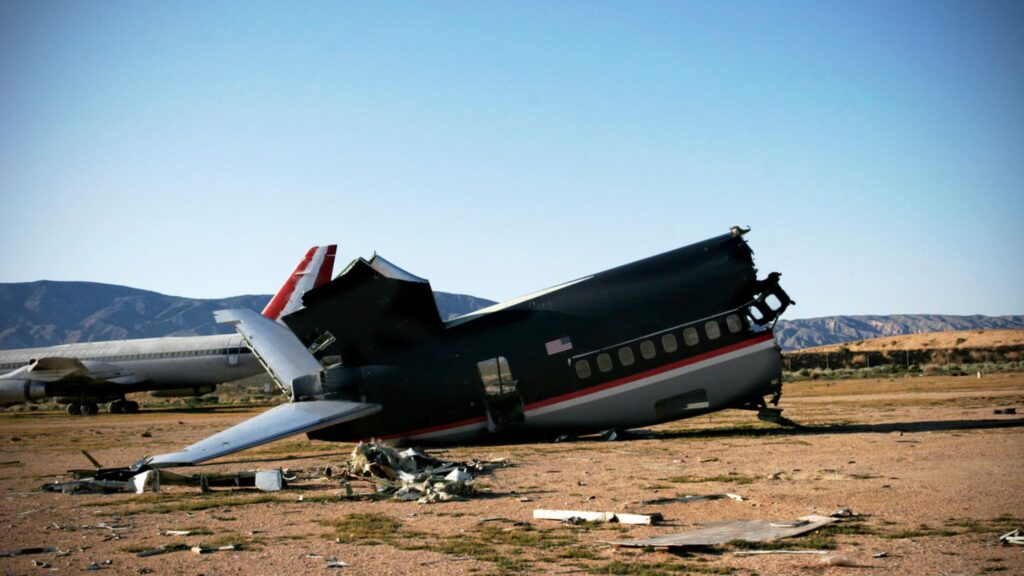- News
- A Crash Course on Your Rights Following an Aviation Accident
A Crash Course on Your Rights Following an Aviation Accident

As you probably know, major aerospace company Boeing has had more than its share of reliability problems in recent months, ranging from one of its jets apparently falling to pieces in flight near Denver as nearly 150 passengers watched in horror, to another of its aircraft experiencing the blowout of a faulty side panel while flying far above Oregon with 171 passengers aboard… and now to a leaky space capsule that’s (temporarily, we hope!) stranded about 250 miles over the Earth at the International Space Station.
Those incidents followed tragic crashes of the company’s 737 Max airliners in 2018 and again in 2019 when hundreds of innocent passengers died due to a flight control problem, ultimately leading to the lengthy grounding of the aircraft. In recent days, the company took a plea deal and agreed to pay nearly $500 million in fines resulting from those two terrifying incidents.
But that unfortunate corporation isn’t the only aviation-related organization that has experienced frightening safety issues of late – ranging from the tragic July plane crash of a Grammy-nominated Gospel group over Wyoming to a chaos-causing software glitch that stranded passengers worldwide at airports for days in recent weeks.
With increasing atmospheric turbulence causing incidents in which unsuspecting passengers have been injured or even killed – and airline flights suddenly becoming more scary than they have been in recent years – it may feel like just about any trip could turn tragic nowadays. Of course, we should make it clear that the odds of being injured or killed in an airplane crash are still quite slim. Indeed, experts say you’re much more likely to be hit by lightning or die from a shark attack than to meet your maker in a plane crash. What’s more, the National Safety Council says you have a far greater chance of dying in a car accident than from any of those other incidents! However, it’s important to note that most cars hold only a handful of people, while just about any accident involving a fully loaded passenger plane could easily result in a mass casualty situation. Which leads us to some vital information for anyone who flies.
Mass Torts and Class Actions Permit Victims of Large-Scale Tragedies to File Personal Injury Lawsuits
If you become a victim of an aviation accident, it’s important to know your legal rights, and to be aware that there’s a crack team of Michigan personal injury attorneys familiar with this type of incident who are ready, willing, and able to take your case in hand.
Specifically, in large-scale situations where multiple people are impacted, the most common legal strategy is to undertake what’s called either a Mass Tort or Class Action lawsuit depending upon the specific circumstances of the case. Essentially, when many people suffer the same kinds of injuries from identical causes, their damages are considered together in legal proceedings we can file known as Class Actions. If, on the other hand, the victims’ injuries differ significantly but are related to the same underlying cause, the legal action is called a Mass Tort. Another way that surviving family members of people killed in aircraft-related incidents can be compensated for their losses is to file a Wrongful Death action against the perpetrators. To determine which of these routes is most appropriate, give us a call at 855-MIKE-WINS (855-645-3946) to discuss the specifics of your situation. And remember that there’s no risk to you whatsoever when you get in touch with us, since you never pay a penny for our services, and we only get paid from court-approved settlement funds and only after we win your case.
How to Stay Safer if You Need to Fly
Before we end this article, we thought we might offer a few ideas on helping safeguard you and your family in the event you ever do find it necessary to take a flight. Experts suggest that non-stop flights are less likely to result in accidents since you only take off and land one time. Additionally, it’s been shown that seats toward the rear of large aircraft are also safer in the event of a crash than those in the front of the plane. What’s more, wing seats can provide more legroom along with quicker access to emergency exits should the need ever arise. And remember that if oxygen masks are deployed due to cabin depressurization, put on your mask before attempting to help other passengers with theirs.
Beyond those pieces of practical advice, the National Transportation Safety Board administers the Federal Family Assistance Framework for Aviation Disasters which is intended to help airline accident victims and their loved ones by providing a number of initiatives called Family Support Tasks. You can learn more in this NTSB brochure which lists the types of resources that are available to help the families of aviation accident victims in the days, weeks and months following such tragic incidents. It notes that investigations into the causes of plane crashes can take up to two years to be complete and offers advice on information and counseling services that may be offered to assist family members during that time.
Finally, don’t forget that we are also prepared to represent you and your interests should you need us following any accident.To get in touch, just dial our number – 855-MIKE-WINS (855-645-3946) – or contact us online whenever you or someone you care about are injured in an aircraft incident or just about any circumstance that’s not your fault.

Content checked by Mike Morse, personal injury attorney with Mike Morse Injury Law Firm. Mike Morse is the founder of Mike Morse Law Firm, the largest personal injury law firm in Michigan. Since being founded in 1995, Mike Morse Law Firm has grown to over 200 employees, served 40,000 clients, and collected more than $1.5 billion for victims of auto, truck and motorcycle accidents. The main office is in Southfield, MI but you can also find us in Detroit, Sterling Heights and many other locations.








